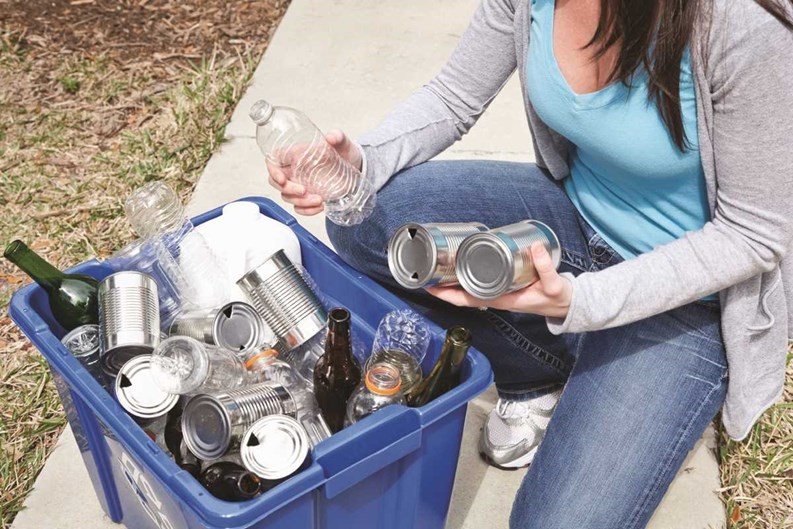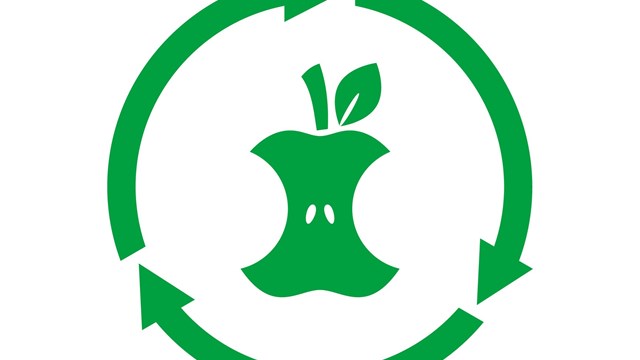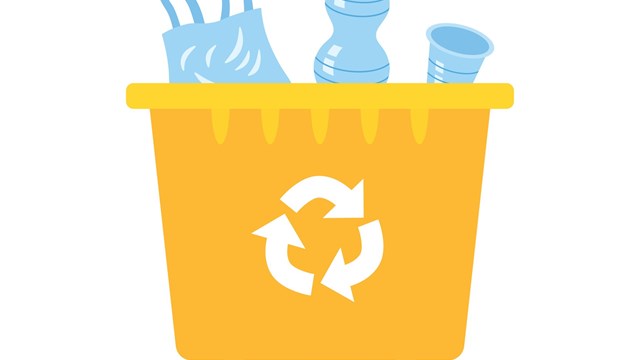New York City is trashy. Literally. Every day, the people living in the Big Apple produce hundreds of tons of trash—12,000 tons, according to GrowNYC, a nonprofit organization that strives to improve New York via environmental programs. That is enough trash each day to fill up the Empire State Building. The diesel trucks that carry Manhattan’s garbage rack up almost 8 million miles every year, which is the equivalent of driving more than 312 times around the earth.
Once all that garbage is carted away from their driveways, curbs and stoops, however, most people don’t give it much further thought. It has to go somewhere, though, and most often, it goes to landfills, transfer stations, and treatment plants throughout New York State, or onto trains and barges and sent even farther afield.
In New York City, where land is so pricey and space is so tight, it’s not surprising that the trash is taken far away from the inner city—but that does not mean that New Yorkers shouldn’t care about the afterlife of their trash. Because while most everyone is happy to get their garbage off their hands, they tend to be less enthused about having those aforementioned landfills, transfer stations, or treatment facilities sited anywhere near their homes or communities.
It is incredibly important to know where your building’s garbage and recycling is going, and to educate yourself about new waste and recycling practices. After all, a landfill or processing center could be proposed to open near your neck of the woods—and landfills are one of the most potent contributors to global warming, responsible for 36 percent of all methane emissions in the United States. Or, perhaps a recycling hub could start in your own building’s basement. Or maybe you’ve got an electronic recycling box in your basement already (most big buildings already do). You should know about it.
Gotham's Garbage
There are 59 different waste management districts in New York City, says Belinda Mager, assistant director with the New York City Department of Sanitation’s (DSNY)'s Bureau of Public Information and Community Affairs. Each district and bureau throughout New York City has a different location for trash drop-offs.
“It goes all over the place,” Mager explains. The collection processing facilities are all over the map, and once the trash gets picked up and goes to the transfer station, it belongs to one of about a dozen or so vendors. (The only vendor that the city runs on its own is in Staten Island.) From there, the trash gets sent to landfills—but there are no active landfills in New York City, Mager says.
As expected, recycling is big in the Big Apple. Most of the city’s waste goes across the Hudson River to New Jersey, while the paper waste is recycled locally or gets recycled further overseas. Glass, plastics and metals collected curbside are sent to New Jersey, where they are processed and sent to many different recycling markets, according to GrowNYC. The processing centers are run by individual waste management teams, and they take over the process once the trash arrives at the center.
Recycling is important in New York, not only for its environmental benefits but also for the amount of money it brings to the city. Paper recycling nets New York $7.5 million after the cost of collection—even though almost half of the paper is still thrown in the garbage, according to GrowNYC. Recycling also cuts down on garbage collection, which is getting more expensive, too. The cost of exporting garbage was expected to rise $5.7 million in 2008 (the latest statistics available by GrowNYC), which didn’t include the cost of collection.
Despite the many benefits of recycling, only about 17 percent of the city’s total waste—or half of what they could be recycling if everyone was doing it properly—is recycled, according to GrowNYC. A whopping 7.5 percent of the waste stream is plastic film such as supermarket bags, while clothing and textiles make up 6 percent.
Organic Organizing
While glass, metal, plastics and paper have historically held the recycling spotlight, the city is currently working on a pilot organics collection program to address all the—for lack of a better word—messy stuff that can't be put in recycle bins. The New York City organics collection initiative is the city's biggest, newest recycling effort, and it’s a city-wide recycling binge that is expected to be ongoing.
In the fall of 2012, the DSNY started offering voluntary curbside collection of organic waste (which includes food scraps, food-soiled paper and yard waste) to some New York City schools, residences and institutions. The program was an immediate hit.
“We expanded it, and are continuously expanding it all over the city,” Mager says. So far, they service 21 large residential buildings, three private schools, and 11 city agencies, including Gracie Mansion and City Hall.
The program currently serves some 100,000 households, and DSNY Commissioner Kathryn Garcia says the program continues to expand to more areas of Brooklyn and Queens to include 70,000 new households.
“Organic materials make up about a third of our trash,” Garcia says, “and we spend millions of dollars every year to send it to out-of-state landfills. We hope our Organic Collection Program will not only reduce the amount of waste sent to landfills, but also create renewable energy or compost, a natural fertilizer.”
If a residential building has 10 or more units, it is not automatically included in the pilot program, but those buildings are encouraged to voluntarily enroll at www.NYC.gov. The program works when residents receiving mailers and starter kits introducing them to the program put their outdoor bins outside on their collection day. After collection, the organic material is composted, or sent to the Department of Environmental Protection’s Newtown Creek wastewater treatment plant to be turned into natural energy in the anaerobic digestion of eggs.
e-Waste
Banana peels and organic waste aren't the only new kinds of refuse being addressed by the DSNY. New Yorkers may have been at something of a loss when it comes to how best to dispose of old laptops, tablets, and other types of electronic, or e-waste—but that's changing. The DSNY's E-cycle electronics recycling initiative was launched in New York last year and has been a huge hit—especially in co-op and condo buildings. The in-building service is the most comprehensive electronics recycling program offered by any municipality in the country, according to New York City Recycles, a department within the DSNY. “Big buildings call us, and they get a bin for their basement,” Mager says. “If you live in a big enough building, we come and pick it up for you.”
Any New York City building larger than 10 units will be eligible for a variety of on-site service options to recycle unwanted electronics. Options include removal of self-stored electronics, locking bins to store electronics for collection and removal, and building events for buildings with 250 or more units. Electronics eligible for the program include TVs, printers, computers and phones, among others. It does not include things like loose batteries, light bulbs or appliances.
“Recycling electronic equipment keeps harmful materials out of New York City’s waste stream and the environment,” says former Sanitation Commissioner John Doherty. “When safe to use, electronics often contain lead, mercury and other hazardous materials, and in fact, make up the largest and fastest growing component of the hazardous materials entering our waste stream.”
The goal of the program is to have most buildings enrolled before the ban on disposing of electronics in residential trash takes effect in 2015.
Know the Schedule
The Department of Sanitation’s regularly scheduled refuse collection is also a big deal in the Big Apple. These collections occur two or three times per week depending on the size of the building and the needs of the building based on population density. The amount of refuse generated varies depending on the seasons.
But not everything that goes into the trash should be there. Each year, New York City residents toss about 200,000 tons of clothing, blankets, curtains, shoes, bags, belts and other apparel. So the city of New York partnered with Housing Works, a New York-based charitable organization and operator of health centers, housing facilities and thrift shops throughout the city, to create a program to make donations much easier. New York City’s Clothing Reuse Program makes clothing donation much easier through in-building drop-off services. Co-op apartment or condo buildings that have 10 units or more can have these collections at no cost to the building or to taxpayers. Any building interested in participating in this new service should fill out a form at www.NYC.gov.
“This partnership will help us achieve our PlaNYC goal of diverting 75 percent of our solid waste from landfills,” says David Bragdon, former Long-Term Planning and Sustainability Director in the New York City mayor’s office. “By making it easier for New Yorkers to donate or reuse their clothes and saving taxpayers the high expense of long-distance transportation and waste disposal, we are achieving our vision of a greener, greater New York.”
Danielle Braff is a freelance writer and a frequent contributor to The Cooperator.







Leave a Comment